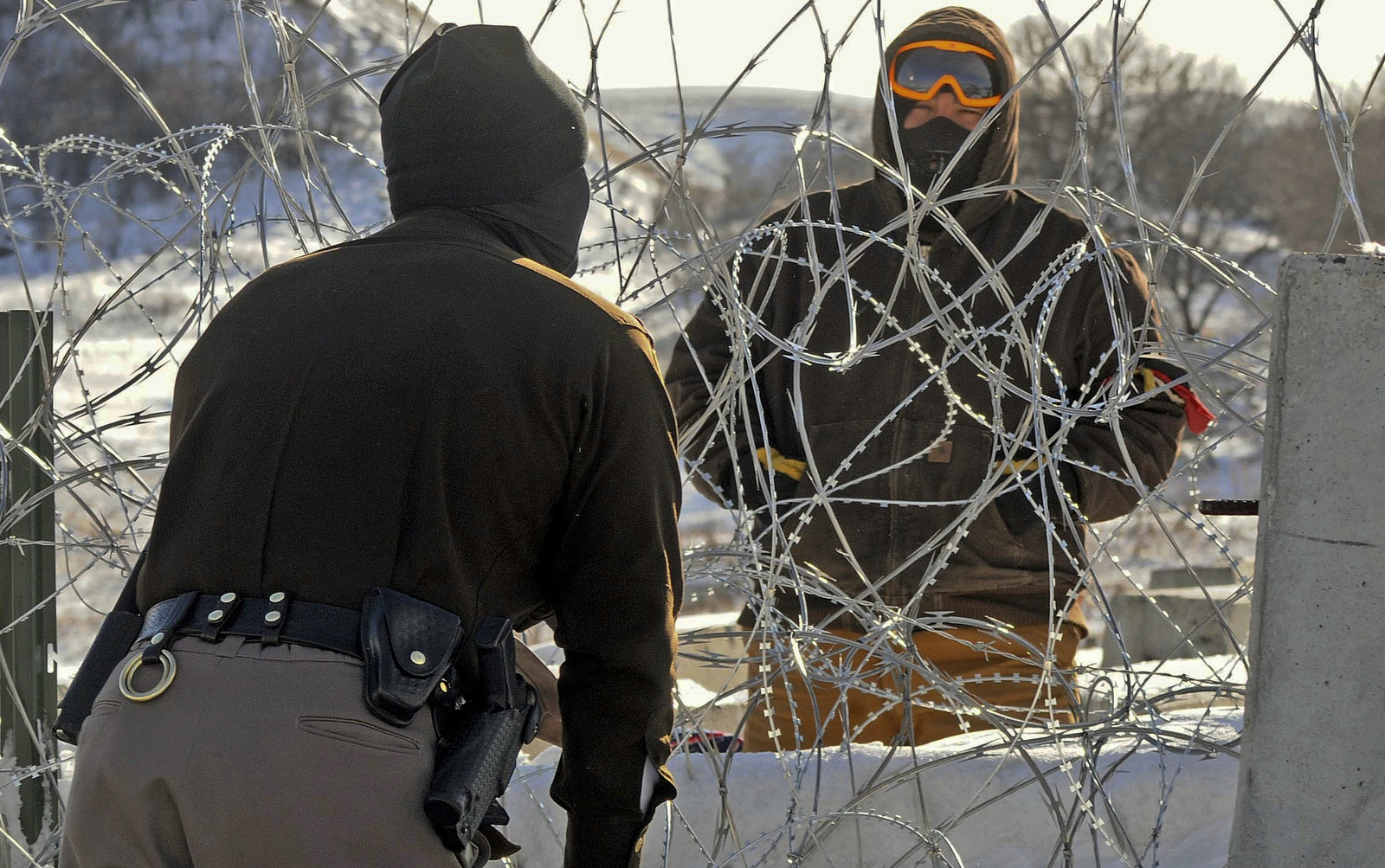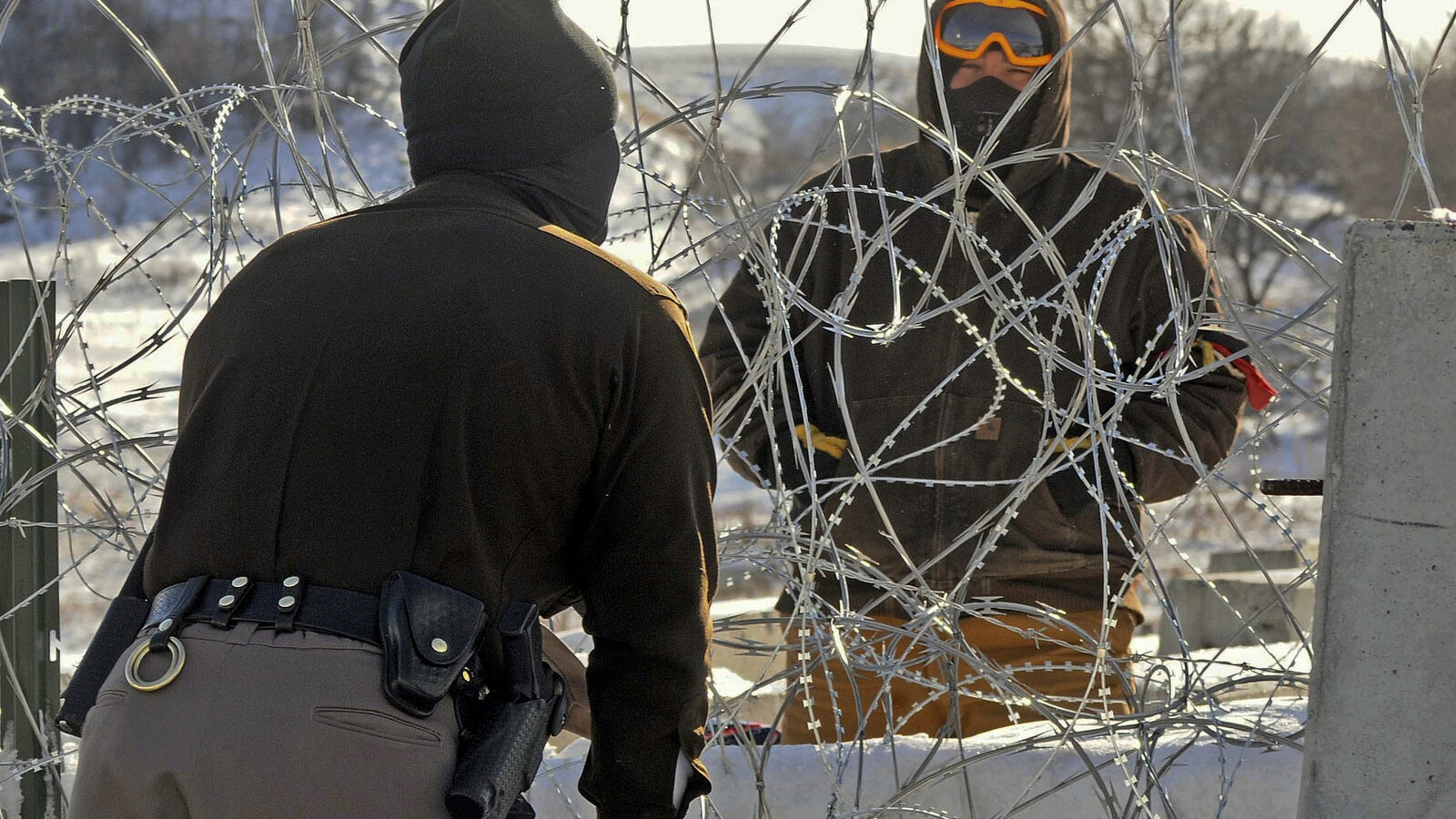
(REPORT) — As Dakota Access police operations intensify, Wisconsin State Patrol has deployed a second officer group. This occurs shortly following raids on some of the last well-entrenched water protector camps. It’s also a move seemingly contrary to the reason Wisconsin authorities returned the first group home.
The deployment of 17 WSP (Wisconsin State Patrol) personnel syncs with a government-imposed deadline for protests to end. Similar to a blockade of food, water, and supplies months ago, this new eviction is framed as a safety precaution. US Army Corps of Engineers, Wisconsin State Journal reports, expressed concerns of “spring flooding”.
Following eviction orders, 150 protesters marched out arm-in-arm. According to Wisconsin State Journal, ceremonial fires were lit shortly before arrests began. Numerous sources have reported about 10 water protectors arrested for not leaving.
Officials claim the 17 WSP personnel volunteered for a nine-day stint at the reservation. According to Wisconsin State Journal, a Wisconsin DOT (Department Of Transportation) memo touted WSP as “well trained and experienced in protecting the (protesters) constitutional rights”. The memo, reputedly from the office of Senator Jon Erpenbach D-Middleton, also cited talents with “public safety in emotional situations.”
Currently, personnel are arriving as arrests, raids, and surveillance continues. It’s a familiar dynamic to their last deployment, coinciding with mass arrests. Last time, Wisconsin law enforcement pulled out after mass outrage back home. That force coalesced over 40 officers from various departments, including WSP. According to officials, residents didn’t agree with their police protecting a pipeline instead of their communities.
Upon returning, however, Wisconsin EMAC (Emergency Management Assistance Compact) produced a telling after-action report. EMAC’s function as agreements between states to help one another during natural disaster scenarios. What set North Dakota’s EMAC requests apart was their targeting of peaceful, albeit massive, political demonstrations. Conventionally speaking, EMAC isn’t intended for civic containment.
Nevertheless, Wisconsin sought to learn from Standing Rock for similar future actions. The Fifth Column News covered these recommendations, among which included training officers in videography.
In the most recent DAPL (Dakota Access Pipeline) raids, officers are doing just that. As water protectors were apprehended, masked officers can be seen shoving large camera’s in their faces.
It’s currently unknown, however, if the EMAC recommendations are being field tested in WSP’s latest deployment. Despite this, other facets of WSP’s recent deployment overlap with EMAC’s after-action. Namely, the use of volunteer’s was shown to improve the morale of the group. According to Wisconsin State Journal, the officers sent to Standing Rock were all volunteers.
Fifth Column journalists were also able to get in contact with a water protector who’d live streamed raids at the beginning of February. Shiyé Bidzííl filmed as authorities forced protesters from hilltop ceremonial sites, and extinguished sacred fires. New blazes were then lit by officers, which many incorrectly believed were tipis. In fact, even Bidzííl said on camera that they didn’t know what the officers burned, or why.
Police vehicles, including armored carriers, then rolled past the Last Child Camp–a main target of eviction orders. Although no clashes occurred, officers did sport Trump 2016 stickers on some vehicles which made protesters uneasy. Officers then left for the opposite hills, setting up entrenched positions until raiding the camp days ago. The Fifth Column reached out to Bidzííl, who agreed to comment for a piece. A lack of response from Bidzííl, however, hopefully isn’t indicative of an arrest.
© The Fifth Column News


